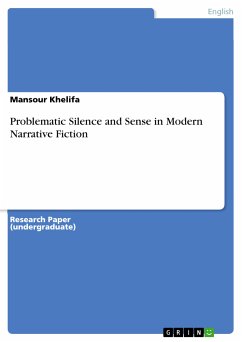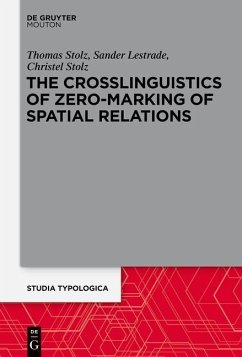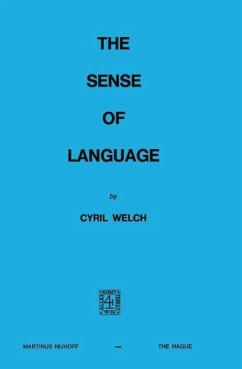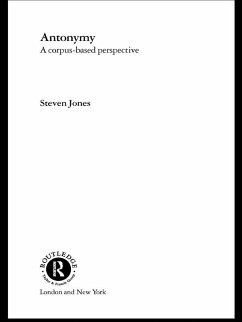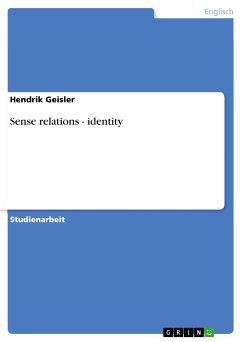
Sense relations - identity (eBook, PDF)
Versandkostenfrei!
Sofort per Download lieferbar
5,99 €
inkl. MwSt.
Weitere Ausgaben:

PAYBACK Punkte
0 °P sammeln!
Studienarbeit aus dem Jahr 2011 im Fachbereich Amerikanistik - Linguistik, Bayerische Julius-Maximilians-Universität Würzburg, Sprache: Deutsch, Abstract: One possible definition of sense relations is: "Any relation between lexical units within the semantic system of a language", (Matthews 1997:337). This means that there has to be a relation in meaning between lexical units of a language. It does not matter if this relation expresses some kind of identity or non-identity. One could also define sense relations as "a paradigmatic relation between words or predicates". "Paradigmatic relations ...
Studienarbeit aus dem Jahr 2011 im Fachbereich Amerikanistik - Linguistik, Bayerische Julius-Maximilians-Universität Würzburg, Sprache: Deutsch, Abstract: One possible definition of sense relations is: "Any relation between lexical units within the semantic system of a language", (Matthews 1997:337). This means that there has to be a relation in meaning between lexical units of a language. It does not matter if this relation expresses some kind of identity or non-identity. One could also define sense relations as "a paradigmatic relation between words or predicates". "Paradigmatic relations are those into which a linguistic unit enters through being contrasted or substitutable, in particular environment, with other similar units", (Palmer 1981:67). In other words, a paradigmatic relation is a relation where an individual lexical unit can be replaced by another. A less scientific approach to sense relations is made by David Crystal: "We have a sense relation when we feel that lexemes relate to each other in meaning", (Crystal 2003: 164). The most common relations in meaning between lexical units are Synonymy and Antonymy. Whereas the latter one belongs to a group of sense relations which express a non-identity, the first one is the most known type of identity-expressing sense relations. Together with Hyponymy, Crystal calls them the "chief types of lexical sense relations". But in the field of semantics, there are far more possibilities of expressing a relation in sense. For example, there are Paraphrase, Homonymy, member-collection and portion-mass relationships, which all express a special kind of identity. In this term paper, the focus lies on sense relations expressing a form of identity, sameness or identical traits.
Dieser Download kann aus rechtlichen Gründen nur mit Rechnungsadresse in A, B, BG, CY, CZ, D, DK, EW, E, FIN, F, GR, HR, H, IRL, I, LT, L, LR, M, NL, PL, P, R, S, SLO, SK ausgeliefert werden.




